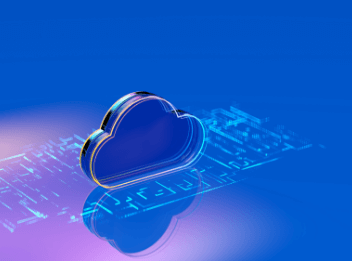In the realm of modern business, where disruptions and unforeseen events can wreak havoc on operations, the concept of disaster recovery has taken on unprecedented importance. The digital age has introduced new complexities, and businesses of all sizes are seeking effective ways to ensure their resilience in the face of adversity. Enter Disaster Recovery as a Service (DRaaS)—a transformative managed service that offers ready-to-use disaster recovery solutions, reducing the complexities of implementation and empowering organizations to navigate the challenges of business continuity with enhanced ease and efficiency. In this blog post, we’ll delve into the world of DRaaS, exploring its benefits and highlighting how it simplifies the pursuit of uninterrupted operations.
The Evolution of Disaster Recovery: From Challenge to Opportunity
Traditionally, disaster recovery has been associated with intricate processes, resource-intensive infrastructure, and complex planning. Small and medium-sized businesses, in particular, have grappled with limited resources and the need to juggle multiple priorities. DRaaS emerges as a game-changing solution that addresses these challenges by providing a comprehensive and managed approach to disaster recovery. In essence, DRaaS shifts the responsibility of managing and executing disaster recovery from the business to a specialized service provider.
The Benefits Unveiled: Why DRaaS Matters
Reduced Complexity: One of the foremost advantages of DRaaS is its ability to simplify the complexities associated with disaster recovery planning and execution. By outsourcing disaster recovery to a service provider, businesses are relieved of the burden of designing, implementing, and maintaining intricate recovery strategies. This reduction in complexity frees up valuable time and resources that can be directed towards core business functions.
Ready-to-Use Solutions: DRaaS provides businesses with turnkey solutions that are pre-configured and ready for deployment. This eliminates the need for in-house expertise in disaster recovery technologies and procedures. With DRaaS, organizations can swiftly activate their recovery environments, ensuring minimal downtime in the event of a disruption.
Scalability and Flexibility: DRaaS offers a level of scalability and flexibility that is challenging to achieve with traditional disaster recovery methods. As business needs evolve, organizations can easily adjust their DRaaS solutions to accommodate changes in data volume, application requirements, and recovery objectives. This adaptability ensures that disaster recovery remains aligned with the dynamic nature of modern business operations.
Cost-Efficiency: DRaaS introduces a cost-efficient model that aligns with the pay-as-you-go philosophy of cloud computing. Instead of investing in expensive hardware and infrastructure, businesses pay for the resources they consume during recovery scenarios. This cost-effectiveness democratizes disaster recovery, making it accessible to businesses of all sizes, regardless of budget constraints.
Rapid Recovery and Minimal Downtime: DRaaS solutions are designed to facilitate rapid recovery and minimize downtime. With pre-configured environments and automated processes, businesses can swiftly resume operations, mitigating the financial and reputational impact of disruptions.
Implementing DRaaS: A Path to Simplification
Assessment and Strategy Development: Begin by assessing your organization’s disaster recovery needs and objectives. Identify critical applications, data, and systems that require protection, and determine the acceptable recovery time objectives (RTOs) and recovery point objectives (RPOs).
Selecting a DRaaS Provider: Choose a reputable DRaaS provider that offers solutions aligned with your requirements. Consider factors such as service-level agreements (SLAs), data replication capabilities, geographic redundancy, and support options.
Data Replication and Backup: Implement data replication mechanisms to ensure that your critical data is continuously mirrored in the DRaaS environment. Regularly back up your data to ensure that you have the most recent copies available for recovery.
Testing and Validation: Regularly test your DRaaS solution through simulation exercises and real-world scenarios. These tests validate the effectiveness of your strategy, identify any gaps, and provide opportunities for optimization.
Training and Documentation: Ensure that your IT team is trained in the implementation and execution of DRaaS procedures. Document the steps involved in the recovery process to facilitate swift and accurate execution during actual disaster scenarios.
Continuous Monitoring and Optimization: DRaaS is an ongoing process. Continuously monitor your DRaaS environment to ensure that it remains aligned with your changing business needs and technological advancements.
Conclusion
Disaster Recovery as a Service (DRaaS) marks a transformative shift in the landscape of business continuity and disaster recovery. By streamlining the complexities of implementation, DRaaS empowers organizations to embrace resilience with confidence and efficiency. The benefits of reduced complexity, ready-to-use solutions, scalability, and cost-efficiency position DRaaS as a compelling solution for businesses seeking comprehensive and accessible disaster recovery strategies. As businesses navigate the intricacies of modern operations, DRaaS stands as a beacon of innovation, simplifying the pursuit of uninterrupted business continuity and empowering organizations to face disruptions head-on. In a world defined by uncertainty, DRaaS offers a clear and simplified path to resilience.


